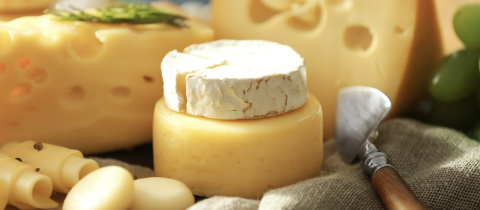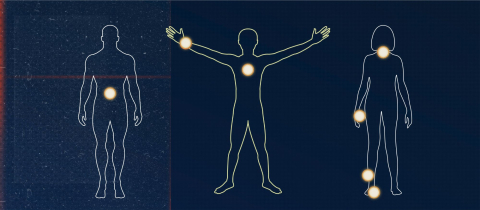Is it true that eating blue cheese causes cancer? That is what one of our correspondents wanted to know. Mercifully, the answer is: no. But I think I know how this story got started. Blue cheese is mouldy cheese. Originally it got that way because it was stored in caves where there were plenty of mould spores in the air, like in natural limestone caves in Roquefort in France. Since ancient times it was known that some cheeses have to be aged to develop their proper flavor. Cheese makers in Roquefort took to storing the cheese in the cool limestone caves. Then one day, a batch of cheese got contaminated with a blue mould. Some adventurous soul tasted it and liked the flavor. And seeing that he survived the adventure, others tried it as well. Soon it became one of France’s most popular cheeses.
Today Roquefort cheese is made by spraying a suspension of Penicillium roqueforti over the curds before aging. This mould needs oxygen to live so the cheese has to be porous. The cheese is usually pierced with stainless steel needles to allow more oxygen to enter. At one time copper needles were used for this process, undoubtedly giving birth to the misconception that the blue coloring was caused by the addition of copper to the cheese. No, it’s caused by the mould.
Granted, the idea of eating mouldy food does not sound appetizing. But there are moulds, and there are moulds. Some are dangerous, some are safe. The unfounded worries about eating blue cheese usually arise when people hear stories about the nasty things that toxins produced by moulds, the mycotoxins, can do. Like the story about the teenager in Alberta who needed an emergency liver transplant after he drank home made rhubarb wine that had become contaminated with rubratoxin B. Or that a mould that grows on sugar cane can produce 3-nitropropionic acid which can cause seizures and coma. Or that after the war in Russia thousands died from eating cereal that had become contaminated by trichothecenes from the Fusaria mould. Or that aflatoxins, produced by a mould that can grow on peanuts or corn are among the most potent cancer causing compounds known.
So it is understandable that people who have heard these accounts become queasy when offered blue cheese. But worry not. Penicillium roqueforti does not produce toxins. It does, however, produce some flavorful compounds. Of course, there are other mouldy cheeses as well. Camembert is coated with Penicillium camamberti which releases enzymes that produce the characteristic flavor. No problem here either. Not everything that is fuzzy is dangerous. If you must worry about something in mouldy cheese, worry about the fat content!







